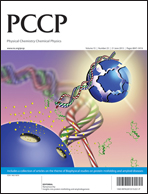Alzheimer's disease (AD) is the most prevalent age-dependent form of dementia, characterized by extracellular amyloid deposits comprising amyloid β-peptide (Aβ) in the cerebral cortex. Increasing evidence has indicated that ganglioside GM1 (GM1) in lipid rafts plays a pivotal role in amyloid deposition of Aβ and the related cytotoxicity in AD. Despite recent efforts to characterize Aβ–lipid interactions, the effect of Aβ aggregation on dynamic properties and organization of lipid membranes is poorly understood. In this study, we examined the aggregation of Aβ on supported lipid bilayers containing raft components (i.e., cholesterol, sphingomyelin, and GM1) and its effects on the membrane properties. We showed that the lateral fluidity of membranes was significantly affected by membrane binding and subsequent aggregation of Aβ. Microscopic observations of the membrane surfaces demonstrated an enhancement in phase separation of lipids as a result of interactions between Aβ and GM1 during induced aggregation of Aβ. The uptake of GM1 into Aβ aggregates and the attendant membrane damage were also observed under a microscope when the membrane-anchored aggregates were formed. On the basis of these observations, we propose that Aβ aggregates formed in the presence of lipid membranes have a latent ability to trigger the uptake of raft components accompanied by phase separation of lipids.

You have access to this article
 Please wait while we load your content...
Something went wrong. Try again?
Please wait while we load your content...
Something went wrong. Try again?


 Please wait while we load your content...
Please wait while we load your content...